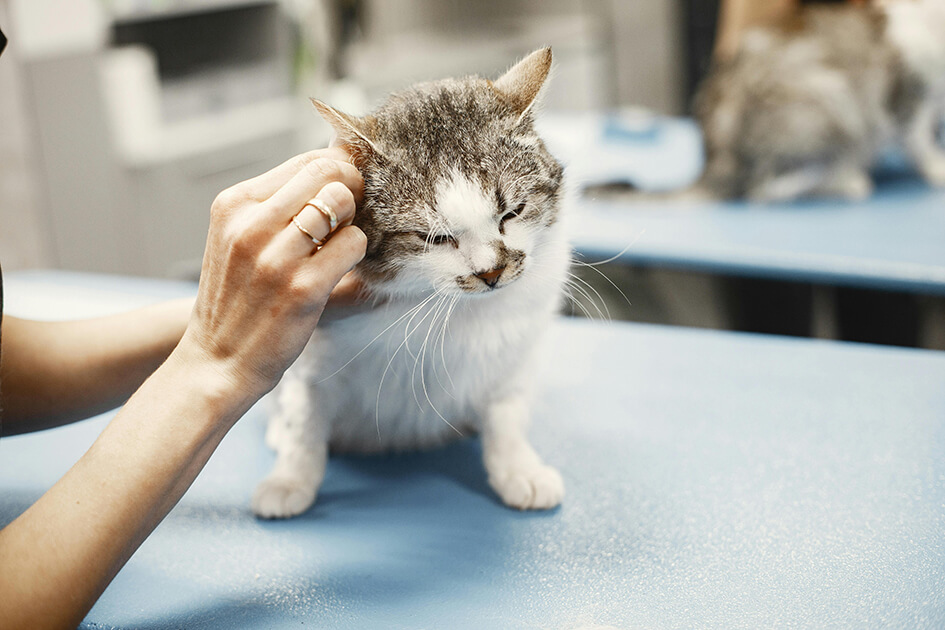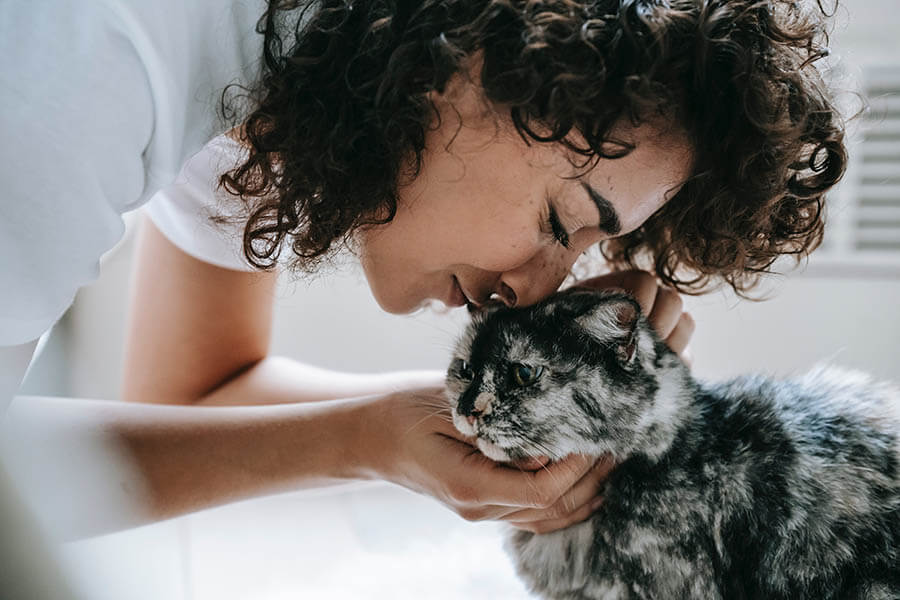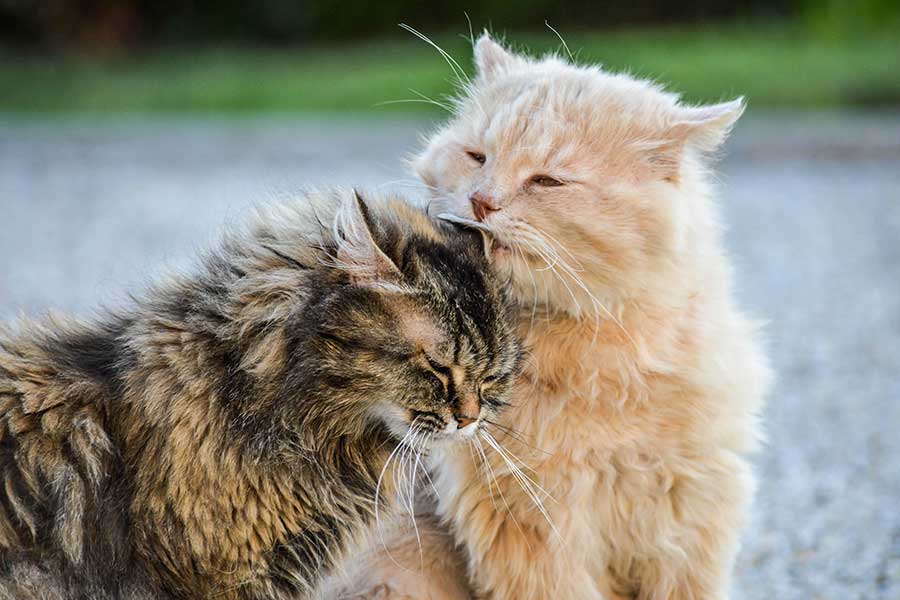Cleaning your cat’s ears is important to avoid ear infections, hearing loss, and other serious health issues. John, one of our dedicated readers, asked our expert how to clean a cat’s ear. His pet cat, Bluee, has recently suffered from an ear infection and he was very concerned about it. He wanted to know some basic ear-cleaning tips as well as why and how often one should clean a cat’s ears to prevent any possible problems.
In response, our expert Dr. Jawad Ahmed (DVM) shares this resourceful guide with step-by-step instructions on how to clean your cat’s ears, and how often you should do it.
Dr. Jawad Ahmad is a highly skilled DVM with expertise in the intricacies of small pet and large animal behavior. Whether it’s treating sick or injured animals, providing routine check-ups and vaccinations, or offering advice and guidance to animal owners, Dr. Jawad is committed to going above and beyond to ensure the best possible care for animals.
Remember, cleaning your cat’s ears is important to maintaining their overall health and well-being.
How to Clean Your Cat’s Ears: A 4 (Four) Step Guide
Step 1: Gather Your Cleaning Supplies
First thing first: Before you start, make sure you have all the necessary cleaning items on hand. You will need a good quality cat ear cleaner, cotton balls or gauze, and a towel. Avoid using cotton swabs as they can push debris further into the ear and potentially damage the eardrum.
Step 2: Carefully Examine the Ears
Before cleaning, take a moment to examine carefully your cat’s ears. Look for signs of infection such as redness, swelling, or discharge. If you notice any of these symptoms, don’t opt for cleaning. Instead, immediately consult with your vet for expert advice and proper treatment.
Step 3: Gently Apply the Ear Cleaner
Hold your cat firmly but gently, and apply a few drops of the ear cleaner into the ear canal. Massage the base of the ear to make sure that the ear cleaner distributes evenly. Remember to follow the instructions on the ear cleaner bottle, as some products may require different application methods.
Step 4: Wipe Away Debris
After applying the cleaner, use a cotton ball or gauze to gently wipe away any debris from the outer ear. Never insert anything into the ear canal, as this can cause injury. If your cat seems uncomfortable or in pain during the cleaning process, stop immediately and consult with your vet.
Extra Tips for Cleaning Your Cat’s Ears
There are a few additional tips that can make the process easier and more effective.
- First, make sure your cat is calm and relaxed before you begin. You might find it helpful to clean your cat’s ears after a play session when they are tired and more likely to stay still.
- Second, always reward your cat after the cleaning process. This can help create a positive association with ear cleaning, making it easier for both you and your cat in the future.
- Finally, always monitor your cat’s reaction to the ear cleaner. If they show signs of discomfort or allergic reaction, discontinue use and consult with your vet.
Why You Should Clean Your Cat’s Ears
Known for being resistant to ear infections and also as expert self-groomers, cats rarely develop ear infections. This makes most cat owners overlook the important cleaning practices to prevent any nausea that their cat may experience.
Cats, like humans, produce earwax and debris that can build up over time. If left unchecked, this buildup can lead to ear infections, hearing loss, and other serious health issues. According to the Cornell University College of Veterinary Medicine, ear infections are one of the most common health problems in cats.
Besides, certain breeds of cats are more prone to ear problems than others. For instance, Persian and Himalayan cats are more likely to develop polyps in their ears, which can lead to chronic infections if not treated properly. Therefore, regular ear cleaning is not just a matter of hygiene, but also a preventative measure.
How Often Should You Clean Your Cat’s Ears?
The frequency of ear cleaning mainly depends on your cat’s breed, age, and overall health. As a general rule, most veterinarians recommend cleaning your cat’s ears once a month. However, if your cat is prone to ear problems, you may need to do it more frequently.
Remember that over-cleaning can also be harmful. Excessive cleaning can strip the ears of their natural oils, leading to dryness and irritation. Therefore, it’s best to consult with your vet to determine the optimal cleaning schedule for your cat.
Let’s Wrap it up!
Cleaning your cat’s ears is an important part of their health care routine. With the right knowledge and tools, it can be a simple and stress-free process. Remember to consult with your vet if you have any concerns or if your cat shows signs of ear problems. With regular care and attention, you can help ensure your feline friend’s ears remain clean and infection-free.
Dr. Jawad Ahmed Dr. Jawad Ahmad is a highly skilled DVM with expertise in the intricacies of small pet and large animal behavior. Whether it’s treating sick or injured animals, providing routine check-ups and vaccinations, or offering advice and guidance to animal owners, Dr. Jawad is committed to going above and beyond to ensure the best possible care for animals.
DVM | Expert in pet behavior
He has experience working with different organizations like the Tahira Animal Welfare Foundation, Todd’s Welfare Organization, and the Poultry Diagnostic Lab. He has more than 20 publications in peer-reviewed journals and achieved 5th position in an international paper competition organized by the University of Brawijaya. His vision is to enlighten and empower pet enthusiasts and animal owners with a profound understanding of proper animal care.













